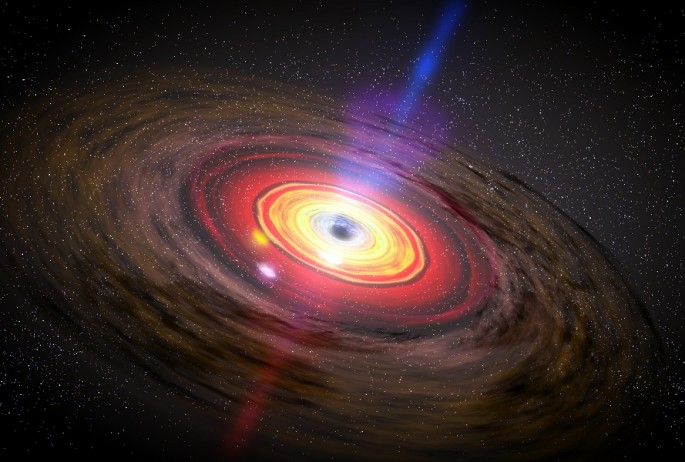Scientists have recently detected an incredibly massive black hole where its current galaxy is apparently too small for this behemoth black hole, defying current space theories and evolution, as researchers from Keele University and the University of Central Lancashire in the United Kingdom, examined this bizarre phenomenon.
This black hole is located in the SAGE0536AGN galaxy which is detected by NASA's Spitzer Space Telescope using infrared light wavelengths. Astronomers believe that this galaxy is estimated to be at least 9 billion years old, possessing an active galactic nucleus.
This nucleus emits very bright light wavelengths via gas accretion powered by a colossal black hole. When this gas accelerates, this is caused by ultra fast velocities originating from the black hole's incredible gravitational field as the gas emits light.
In this new study, scientists have determined the size of this black hole by taking measurements of the speed of the gas swirling around inside the black hole. Using the Southern African Large Telescope, scientists have taken further examination of its hydrogen emission line.
In this galaxy spectrum, where light creates its many individual colors similar to a prism, researchers could view how this spectrum is made to expand into a wider range by a Doppler Effect. When scientists measure how wide this spectrum is becoming, they could determine how gas was moving in high speeds.
This new study reveals findings that the black hole inside SAGE0536AGN contains the 350 million solar masses comparable to our sun. The galaxy is also estimated to contain 25 billion solar masses where the galaxy is 70 times bigger than the black hole where astronomers say that current theories only limit black holes this large to a threshold of 30 times larger than its galaxy only.
According to astrophysicist and lead author of the study, Jacco van Loon from Keele University, since galaxies possess vast mass, black holes also possess the same within their core. However, this particular one is too big for its own good, where it should not be possible for it to grow so large. Traditionally, black holes tend to grow at the same rate as their galaxies unlike the SAGE0536AGN.
This new study is published in the journal Monthly Notices of the Royal Astronomical Society.



























